Dear Paola, I appreciate your work very much and would like to show them, as you know, in an exhibition. Now I have the opportunity to use this virtual studio visit to draw attention to the special nature of your sculptural objects, which we would now like to talk about in more detail.For all non-Frankfurt residents, I would like to briefly introduce the artist: Paola, you were born in Milan in 1975, you also attended the prestigious Accademia di Belle Arti di Brera there (1995 to 1999) and then you came to Frankfurt in 2000 to study at the internationally oriented art academy, the Städelschule. We also know each other from that time. You were in Frankfurt for a total of four years. My first question: Where did you get the impulse to study at the Städelschule, since Düsseldorf is just as well known and renowned as an art academy? – Did you already want to get away from the tradition-bound medium of painting as a student? Paola: Yes, definitely, I was studying traditional restoration and fresco painting as well mosaics, so I really wanted to explore contemporary art practices, after a visit at my first Biennale di Venezia 1999, I was so excited, than I felt the urgency to make a drastic cut with the past.
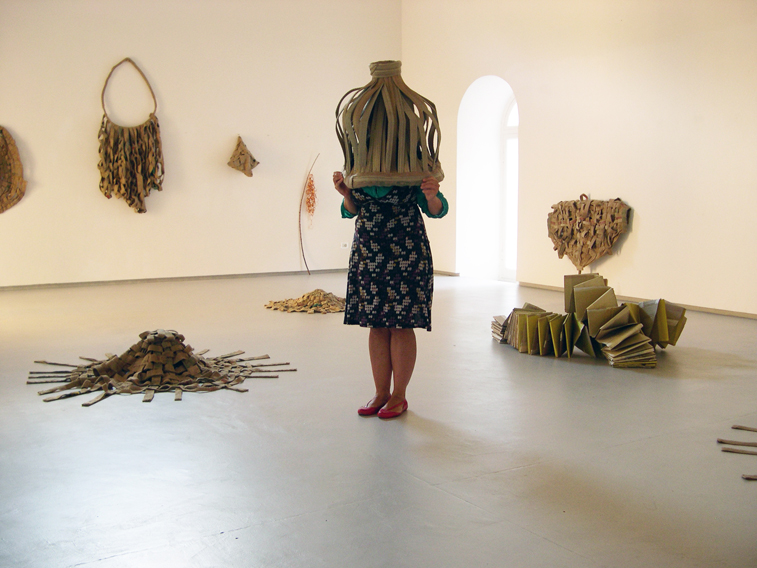
I came to Frankfurt because I had the opportunity to spend a semester with the Erasmus program during my time at the fine art Accademia Brera in Milano, and I choose to come in Germany, so I was selected for the Städelschule. After 8 months I asked for a regular enrollment and I became a full time student. First I was at the Christa Näher class and later in the international class of Tobias Rehberger. In that period, my English was terrible, I was translating letterally from Italian, and my German was zero, so I had to start a new way of expression…
What was it like for you to study at the Städelschule? Great, but also very demanding, I think it was that kind of choice that you take when you are quite young; anyway it was a very important step in my life. At the Städelschule, I stayed four years and three more years in Frankfurt.
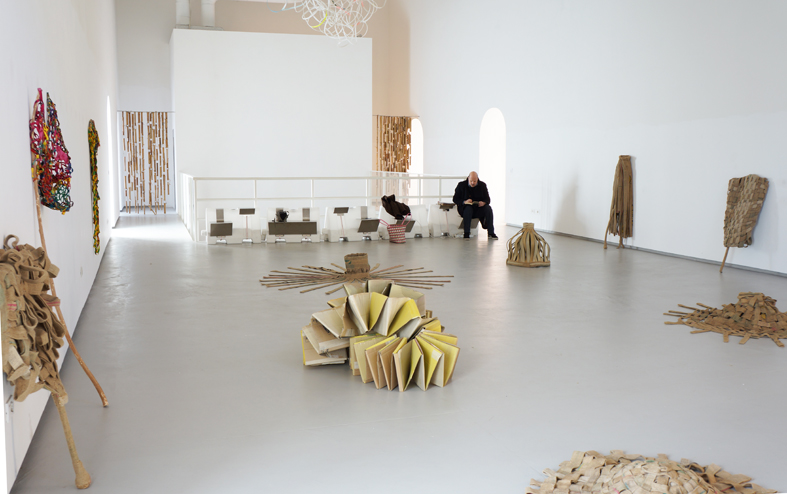
Since your return to Italy, to Turin, you have been very productive and have been able to exhibit your work in Turin as well as in many other countries. Let’s talk about how you develop your works: where do you get your ideas Paola? It has been a gradual process; I can talk about it explaining several steps: First step: my work was a in a performative phase, in collaboration with dancers that started in Frankfurt, at that period I was working in Das TAT, so I was really interest in contemporary dancing. Second step: my practice became an environmental work like in the case of the show at the Fondazione Sandretto and at big performance work presented at the Fondazione Merz. The viewer could act in the work. Third step: while I was exploring and researching on the work of Lygia Clark, I shot a film on her classes in Paris, and from that moment on I started to be more interested in the sensorial aspect of physical work. It was a very important and revelatory experience for me – working on this aspect of Lygia Clark’s practice… – because it forced me to go beyond the first look of the artwork, digging deeper into aspects not immediately visible…
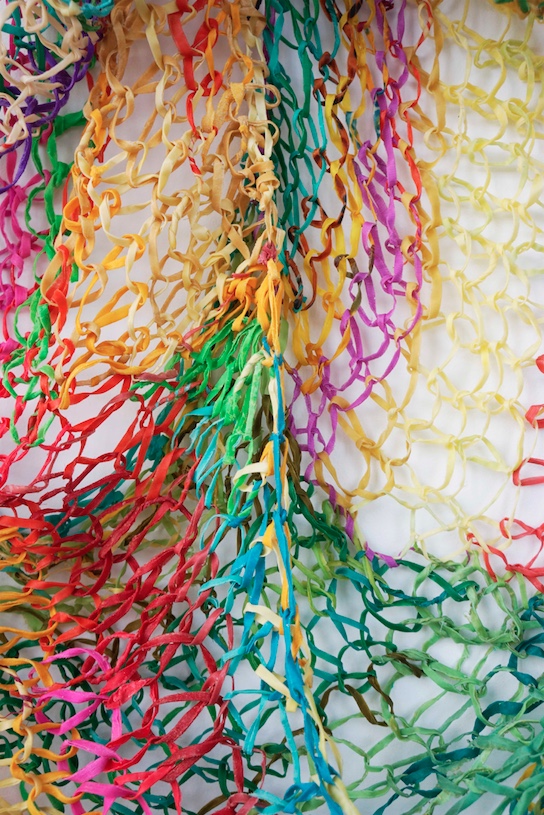
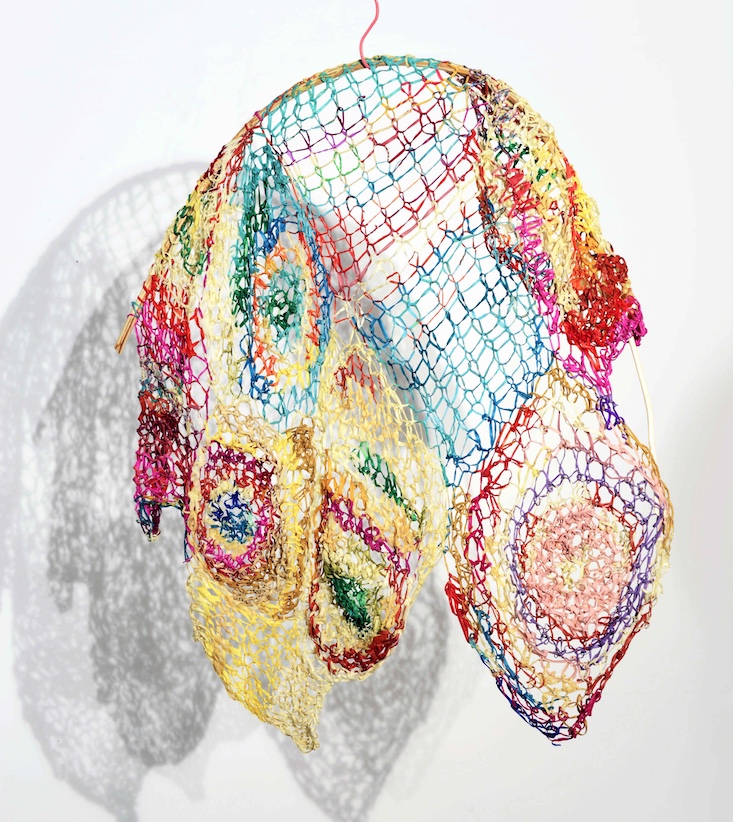
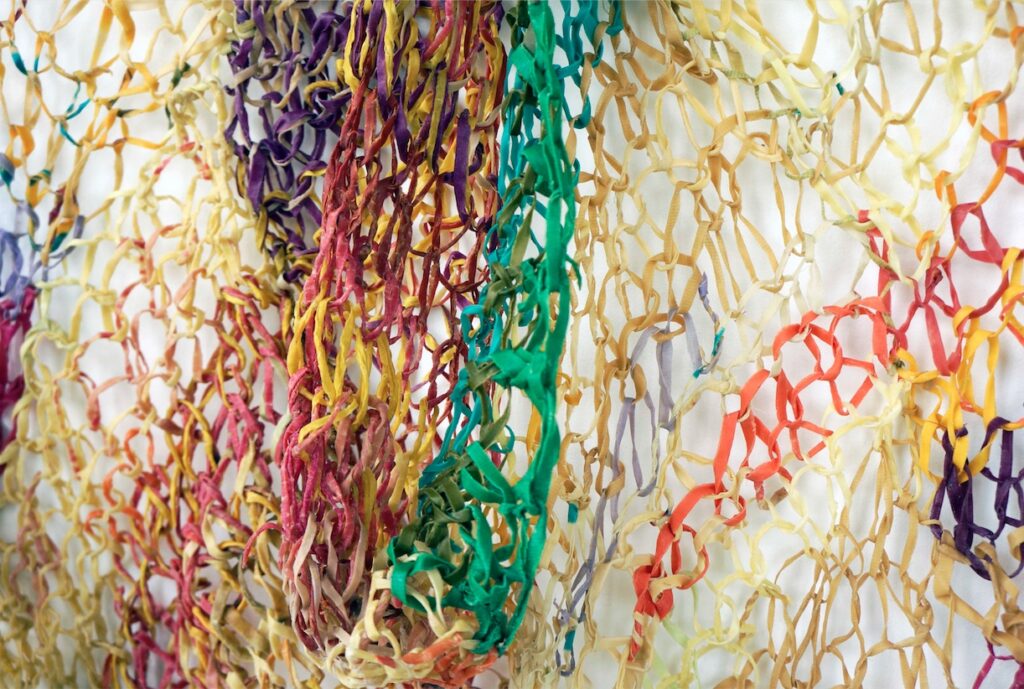
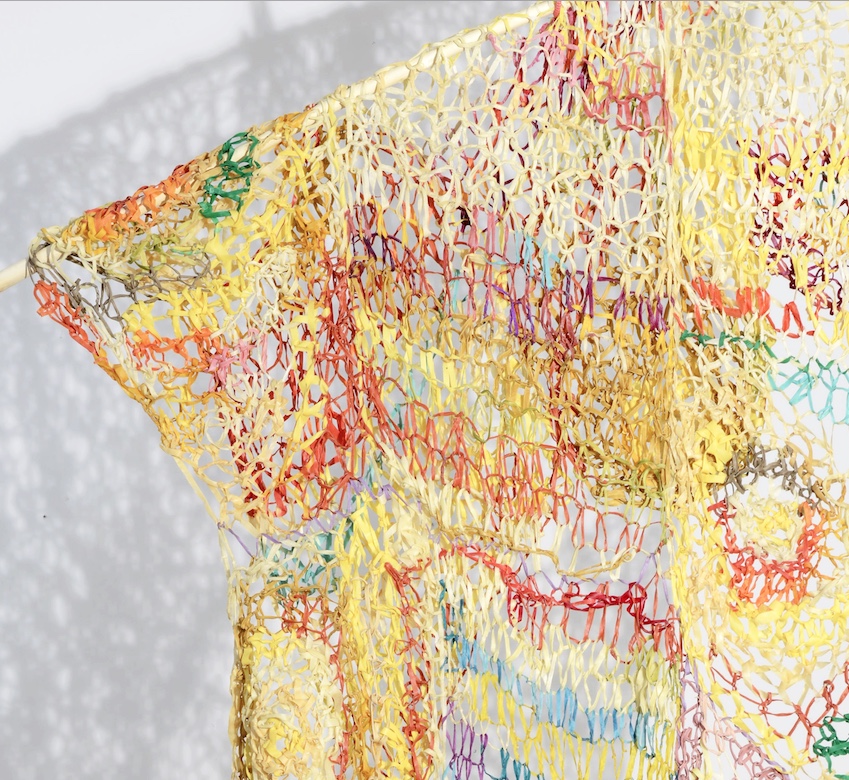
Fourth step: I can say that today, in my work, I consider organic materials very interesting , my sculptures always have a sensorial aspect , I even use organic materials , as Orange peel , bees wax… and natural fibers It’s like I deliberately put the focus on physicality from the initial performers to the viewer that now become the center of experience. My work consider the relation with the viewer .
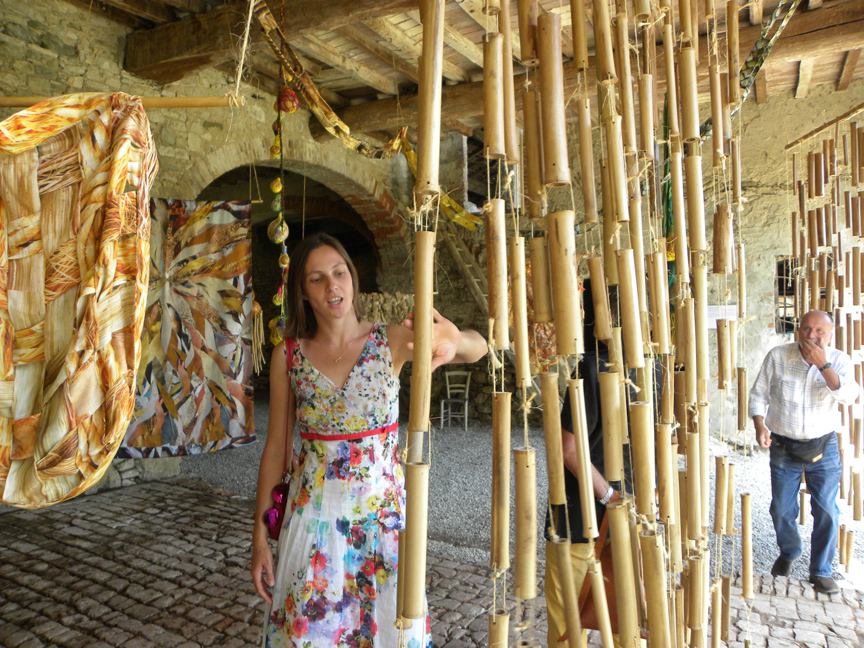
„… we need to show the work in public, in my case I need to show it, I can not only work in the studio, I need interaction, I need to talk outside of the studio. I’m not a lonely or solitary person … I’m not attracted at all to virtual tour or 3d or virtual spaces …„ (Paola)
To get a better idea of what your works look like, let’s talk about those materials you choose. They are fabrics and mostly natural materials from which you develop – I think – very poetic objects. I’m thinking, for example, of „Voci II“ from 2012. Are those fruits, pumpkins that you processed? They remind me a bit – the organic forms – of works by Eva Hesse. Actually it is the physical natural material that suggests sculpture to me, or bring me to completion – I do not use any toxic material (like the ones so used in the sixties by artists like Eva Hesse and many others…) – To me the choice of ecological material is very important… lagenarian gourds were used as container in ancient times and still today in countries such as Africa or South Asia. These pumpkins have many functions, the first time I saw them in Brazil, they were used in Candomble – an African diasporic religion – some of these pumpkins look like bottles, barrels – they are containers. In my work „Voci II“, some of the pumping come from Brasil, others from farmers in Italy.
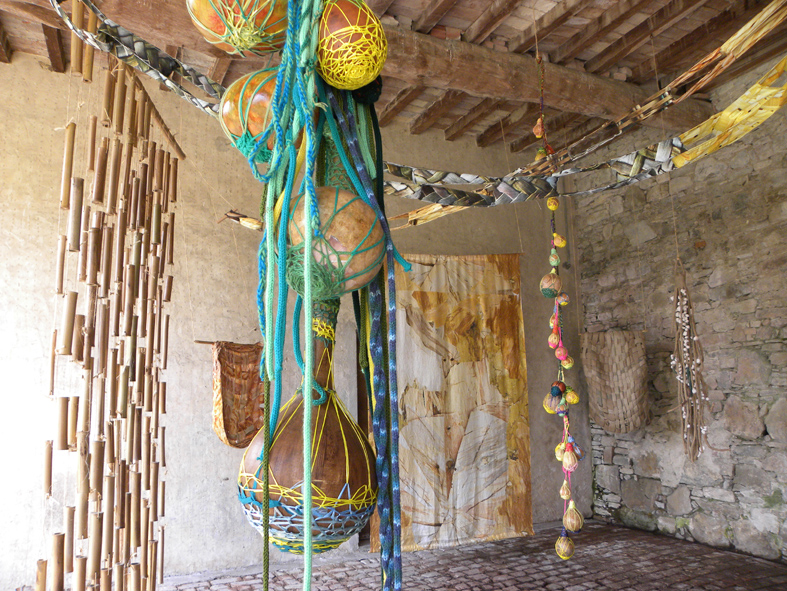
In some countries, pumpkins are also used for processing instruments. Is there a connection between them and music? Yes, in the specific case of the work you mentioned „Voci II“ inside the Calabash there are various seeds, and I was interested in the percussive element produced by those vegetables. So, I developed an interest in anthropological customs and traditions.
To learn more about this: Concerning your way of producing and also the choice of the as already said mostly natural materials, do you refer here to the art and culture of South America? Not so directly… I have been more attracted by botanical gardens and parks. In the case of Rio de Janeiro, the plants that have adapted to the climate in the city were imported from all over the world by Burle Marx, an Brazilian landscape architect. – During my residency program I spent there, some time in Brasile, Bolivia, Cameroon, each of this residency experience where for different purposes.

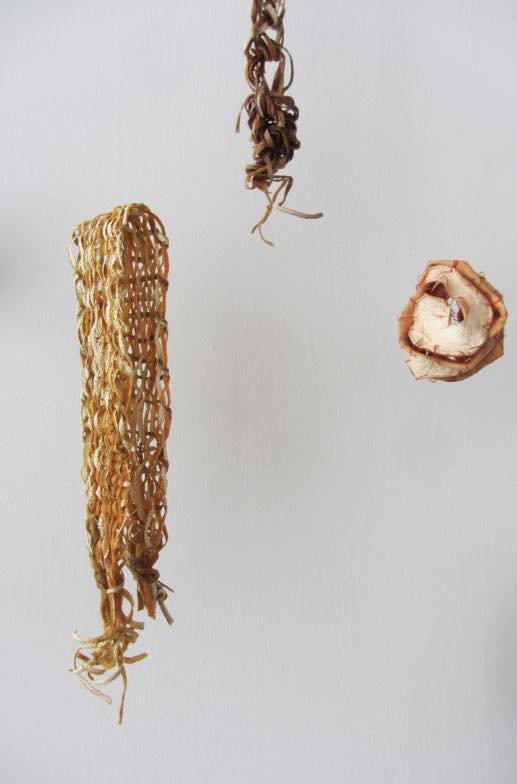
Your objects arouse associations in the viewer: sometimes one feels reminded of a woven lamp, sometimes of baskets, sometimes of a mask, for example. But your works probably don’t have these functions at all. Do you consciously play with these interfaces – functional – disfunctional?
I get inspired by anthropological objects, constructions, but for me the important result is the sculptural shape. I like to work with organic shapes so curved and soft lines are very important to me: roundness, it is feminine, mother…„

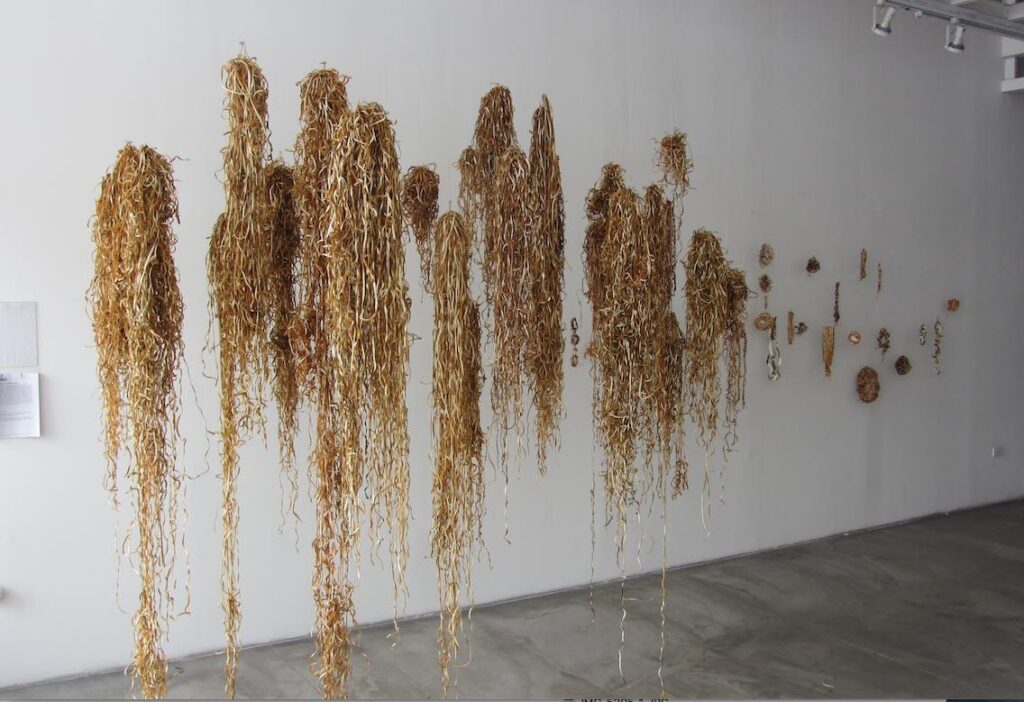
You mentioned an interest in anthropological customs and traditions, which customs exactly do you mean? I’m interested in Craft traditions, textile traditions, weaving, basketry, ceramic craft, popular craft, especially textiles because you can read and recognize cultural identity based on material culture. Material culture- as it has been studied for years by anthropologists – is the most accurate and significant expression of human creativity as synthesized over the centuries. For example: Natural fibers were used to weave everyday objects long before plastic invention. And they are so refined so extraordinair that you can see and understand how much knowledge has been put express in those techniques. The result of a collective intelligence expressied in so many century, as in anonymous architecture...
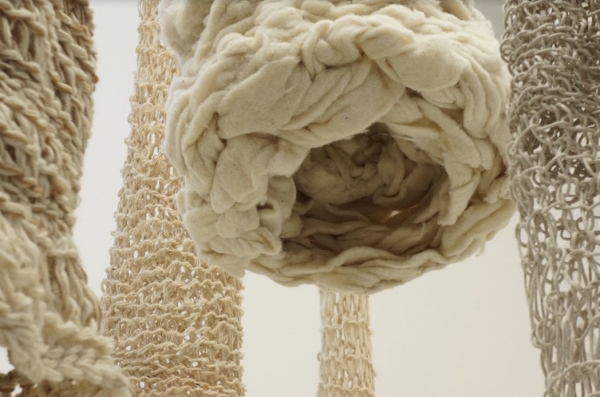
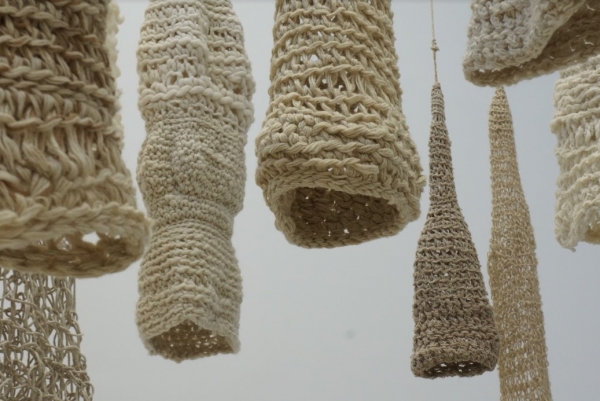
Take for example my work "Sciami": The irregular handmade weaved works are the result of a practice between weaving and painting that draws sequences of patterns. Textures of fabric soaked in melted wax, by working with this material I rediscover the therapeutic qualities and beneficial virtues as beeswax possesses. The works possess their own fragrance, sweet as honey, produced by bees that collect pollen from flowers; the combination of colors - in the soft textures..
One could also see in the materials you use and your turn to customs of non-European cultures, including Arab, South American, and African, an interest in post-colonial issues and coming to terms with them. Would you confirm that? Actually I’m not interested in reproducing pre-existing techniques but I got inspired and I tend to re-work and reinvent techniques, in fact my working attitude is a quite long process… because I have to familiarize with actual technique that I elaborate. In every Research I’m developing, I have to create a new way of working…
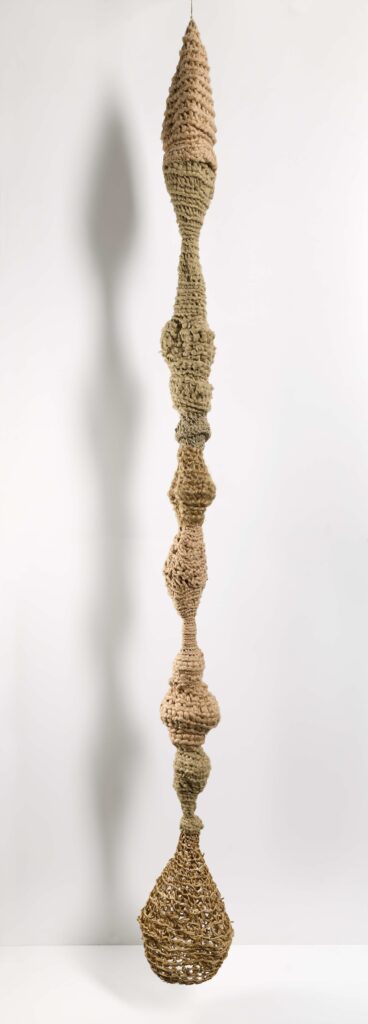

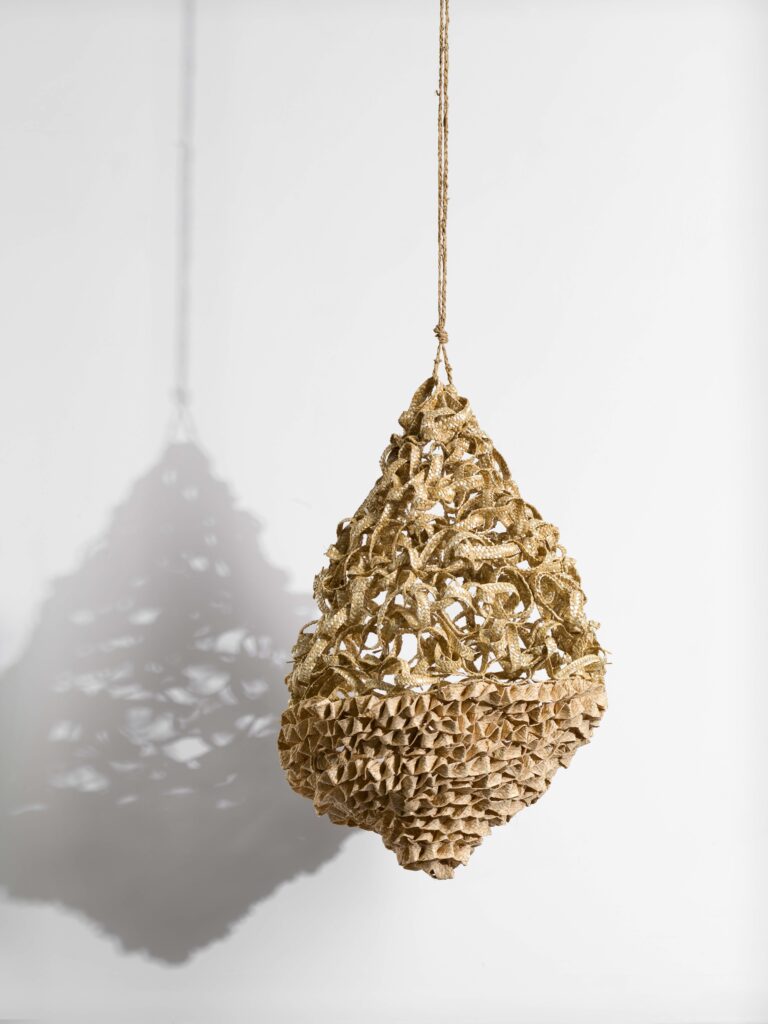
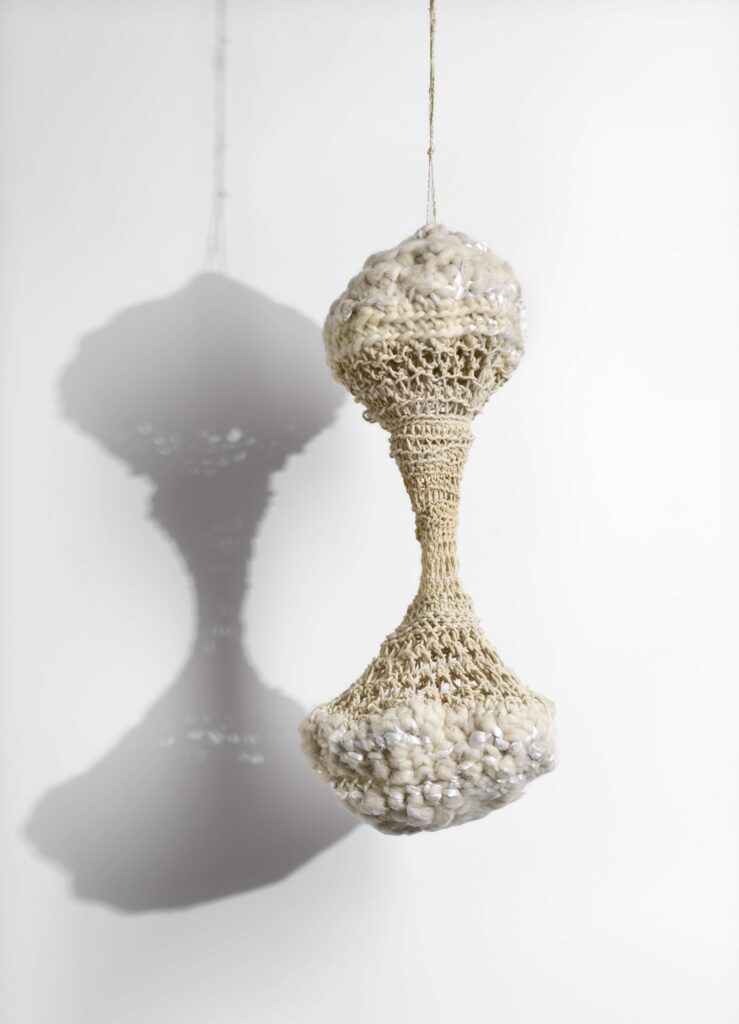

Besides your exhibitions you also develop workshops and these often have a social component. What role does this social aspect play in your work? Not really a social component, but a collective sensory aspect has an important value, I believe in the potentiality of individual people … in my workshop you can be helped to discover your own potentiality.
Finally, the question: Can we learn anything from this breathing space in which we cultural workers all find ourselves at the moment? – Or how do you assess the current situation as an artist?Yes, we need to show the work in public, in my case I need to show it, I can not only work in the studio, I need interaction, I need to talk outside of the studio. I’m not a lonely or solitary person … I’m not attracted at all to virtual tour or 3d or virtual spaces …
Thank you Paola for the interview.

Paola Anziché (Milan, Lives in Turin and Milan) obtained a degree at the Accademia di Belle Arti di Brera and at the Städelschule, Staatliche Hochschule für Bildende Künste, Meisterschülerin, Frankfurt, Germany. 2019 the monography „La terra suona/ The Earth Sounds“ has been published by Viaindustriae publishing.
Her work has been exhibited in numerous public and private institutions, including the Salvatore Ferragamo Museum in Florence; Turner Contemporary in Margate, England; the Remotti Foundation in Camogli; the Sandretto Re Rebaudengo Foundation in Turin; the Kichik QalArt in Yarat, Baku, Azerbaijan; the GAM -Gallery of Modern Art of Turin, and Careof, Milan.
She has participated in numerous international residency programs as Temporars at Muzeum Susch, Susch, Switzerland; Kiosko Galería in Santa Cruz de la Sierra, Bolivia, HIAP Residency Program in Helsinki; SYB Artist Residency in Beetsterzwaag, The Netherlands; RES.O ‘international network for art residencies, Turin; Pact Zollverein Zentrum in Essen and the Centre international d’accueil et d’échanges des Récollets in Paris. She also collaborated teaching at the College of Art at the University of Technology in Taiyuan, Shanxi, China. http://www.paolanziche.net/